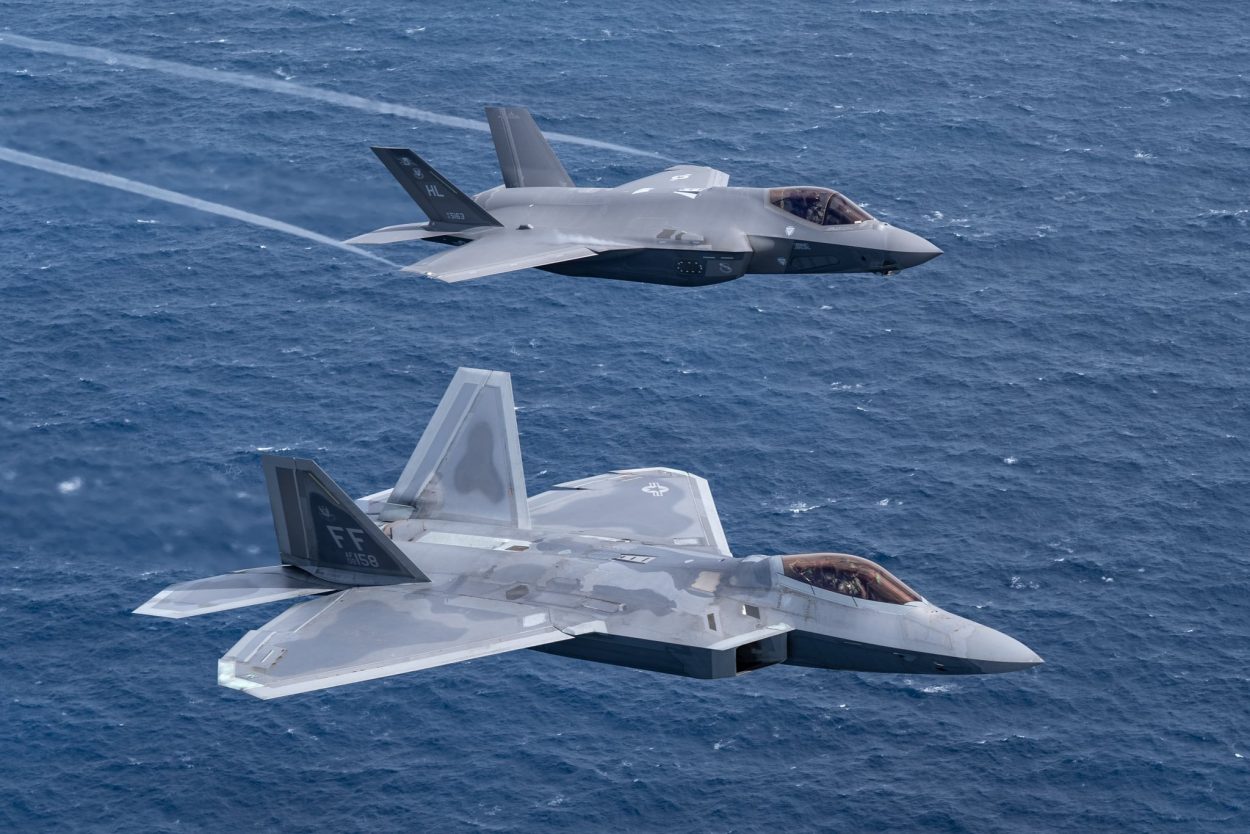When America’s F-22 Raptor and Russia’s Su-35 are placed head to head, comparisons are inevitable. It is impossible to declare one as a clear, outright winner, but it seems the Russian jet has some advantages over the ‘deadly’ Raptor.
The Sukhoi Su-35 is an advanced multirole air superiority fighter developed from the existing design of the Su-27 flanker. Designated as ‘Flanker-E’ by NATO, the single-seat, twin-engine multirole fighter is, in fact, ‘supermaneuverable’ – bigger, faster, and with longer flight capability.
The F-22 Raptor, on the other hand, is one of the most advanced tactical warplanes ever made with the definition of agility, range, and stealth.
The F-22 has a reputation for being almost undetectable with the ability to lock on to a target without being in their visual range owing to advanced stealth technology used in the aircraft. The Raptors were inducted into the United States Air Force (USAF) in 2005.
The Su-35 is designed for dogfights with more external firepower compared to the American F-22, whose weapons are stored internally. The Sukhoi jet has 12 hardpoints for carrying external weapons and stores. Four on each wing, two on the underside of the fuselage, and one under each engine.
The F-22 Raptor is outfitted with just four external hardpoints on the wings to carry weapons or fuel tanks, but using these would affect its stealth feature.
F-22 Raptor’s One Major Drawback
The Lockheed Martin F-22 Raptor is beyond par among fighter jets, but why does it lack the Infra-Red Search and Tracking (IRST) and cheek-mounted radars? The reason lies in the US Air Force’s cap on the cost of the F-22’s avionics at $9 million per aircraft in production in 1989, observes National Interest.
At that time, the design on paper had cost over $16 million of avionics on each aircraft. The USAF had not provided instructions on which systems were to be dropped, and the manufacturers had this decision in their hands.
This led to Lockheed Martin dropping the IRST and the side-looking, cheek-mounted radars, among various other systems.

A vital advantage now lies with the fourth generation Su-35’s infrared search and track fire control system. It includes a camera, target designator, laser rangefinder, and infrared sensor.
Although the fifth-generation F-22 and the fourth-generation Su-35 have almost similar capabilities, the latter’s superior dogfighting capabilities, significantly cheaper cost, and IRST technology give the Russian jet one clear edge over the US aircraft.
Research by The EurAsian Times and defense expert Alex Lockie has shown that the US Raptors would be at a disadvantage in a face-to-face encounter or during an interception with the Su-35.
If an aerial skirmish were to occur during an interception mission, experts believe that the Russian jets would have a massive advantage having the ‘invisible’ F-22 Raptor in sight.
Lt. Col. David Berke, the only US Marine to fly both the F-22 and the F-35, said that when flying the F-22, my aim wouldn’t be to get in a turning fight with an opponent. Instead, Berke said he would use the F-22’s biggest advantage of stealth and avoid a within-visual-range aerial duel.
As the F-22 was designed to be stealthy and have internal weapons storage, Justin Bronk, an expert on combat airpower, said that aircraft like the F-22 were “not really necessary” for interception missions and that other, cheaper jets could do the job.
- Penned By Safiya Khanam / EurAsian Times Desk
- Follow EurAsian Times on Google News
- Article Republished From 2021




